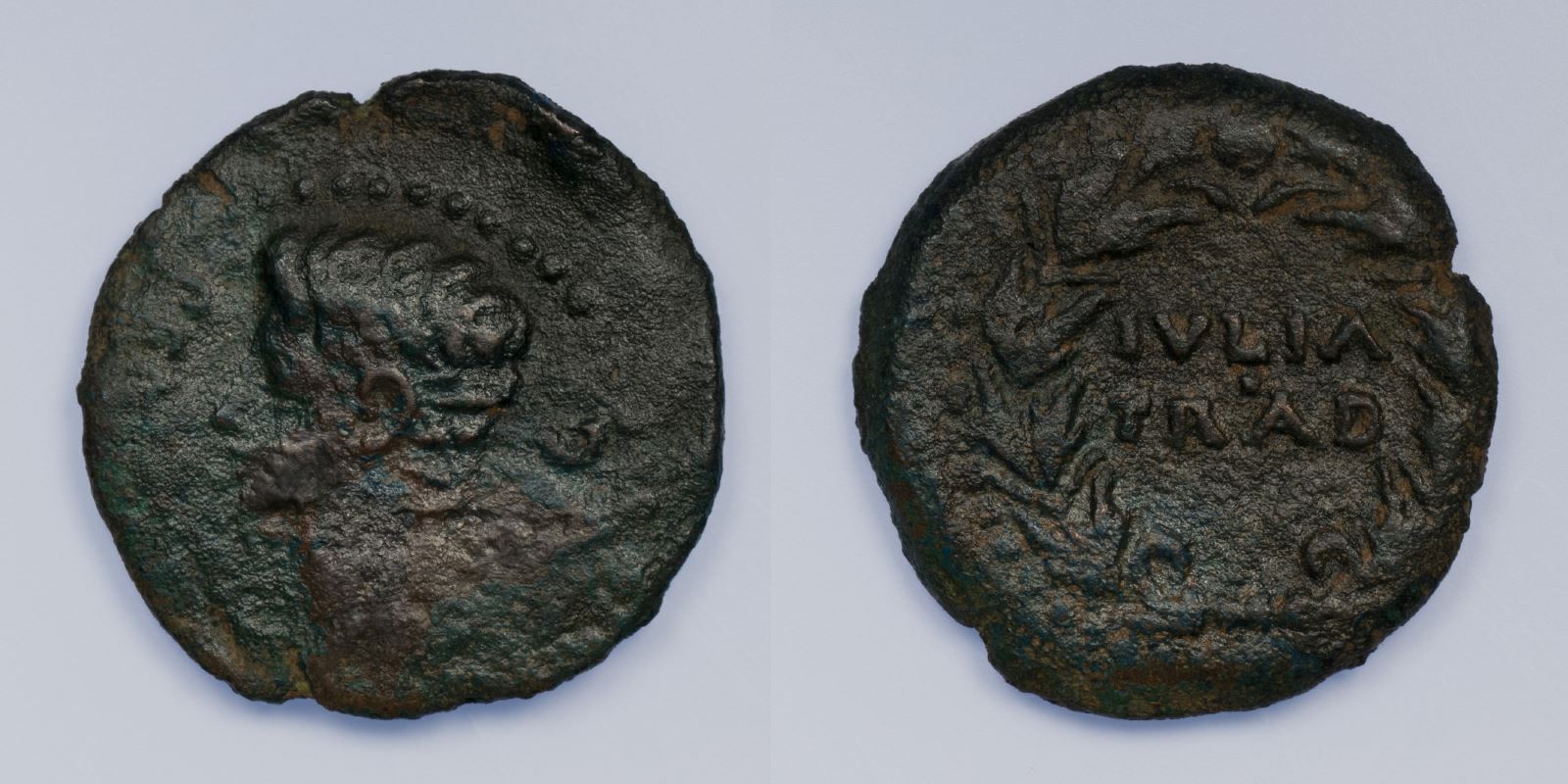Iulia Traducta was a Roman city in Andalusia, Spain, on the site of the modern Algeciras.
In the first century BC Iulia Traducta had a mint which has left abundant coins (dupondios, ases, semises and quadrants), clearly showing the importance of the fishing and industry of the town, issued between the years 12 and 10 BC.
Creation of this mint was part of the propaganda drive by Octavius to show the divine character of the emperor. The coins minted in the city showed the image of the emperor, his sons Gaius and Lucius and the priestly attributes of princeps of Rome. It also showed symbols related to the economy of the city such as tuna.
In the first century BC Iulia Traducta had a mint which has left abundant coins (dupondios, ases, semises and quadrants), clearly showing the importance of the fishing and industry of the town, issued between the years 12 and 10 BC.
Creation of this mint was part of the propaganda drive by Octavius to show the divine character of the emperor. The coins minted in the city showed the image of the emperor, his sons Gaius and Lucius and the priestly attributes of princeps of Rome. It also showed symbols related to the economy of the city such as tuna.
Modern location: Algeciras, Spain
(1)
Augustus
.jpg)
An
AE
As
struck 27 BC-14 AD
in
Julia Traducta
Obverse: PERM CAES AVG, Bare head of Augustus facing left
Reverse: IVLIA TRAD in two lines within oak wreath
Diameter:
26 mm
Die Orientation: 2 H
Weight: 8.92 g
Die Orientation: 2 H
Weight: 8.92 g
RPC doesn't commit to a particular dating for this issue but mentions the debate putting it at a range of 15 to 10 BC.
The obverse inscription translates to "[struck with] Permission of Caesar Augusuts"
The reverse inscription translates to "Julia Traducta"
The obverse inscription translates to "[struck with] Permission of Caesar Augusuts"
The reverse inscription translates to "Julia Traducta"
RPC I 108
(2)
Augustus

An
AE
As
struck 27 BC-14 AD
in
Julia Traducta
Obverse: PERM CAES AVG, Bare head of Augustus facing left
Reverse: IVLIA TRAD in two lines within oak wreath
Diameter:
24 mm
Die Orientation: 10 H
Weight: 7.91 g
Die Orientation: 10 H
Weight: 7.91 g
RPC doesn't commit to a particular dating for this issue but mentions the debate putting it at a range of 15 to 10 BC.
The obverse inscription translates to "[struck with] Permission of Caesar Augusuts"
The reverse inscription translates to "Julia Traducta"
The obverse inscription translates to "[struck with] Permission of Caesar Augusuts"
The reverse inscription translates to "Julia Traducta"
No references provided for this coin
